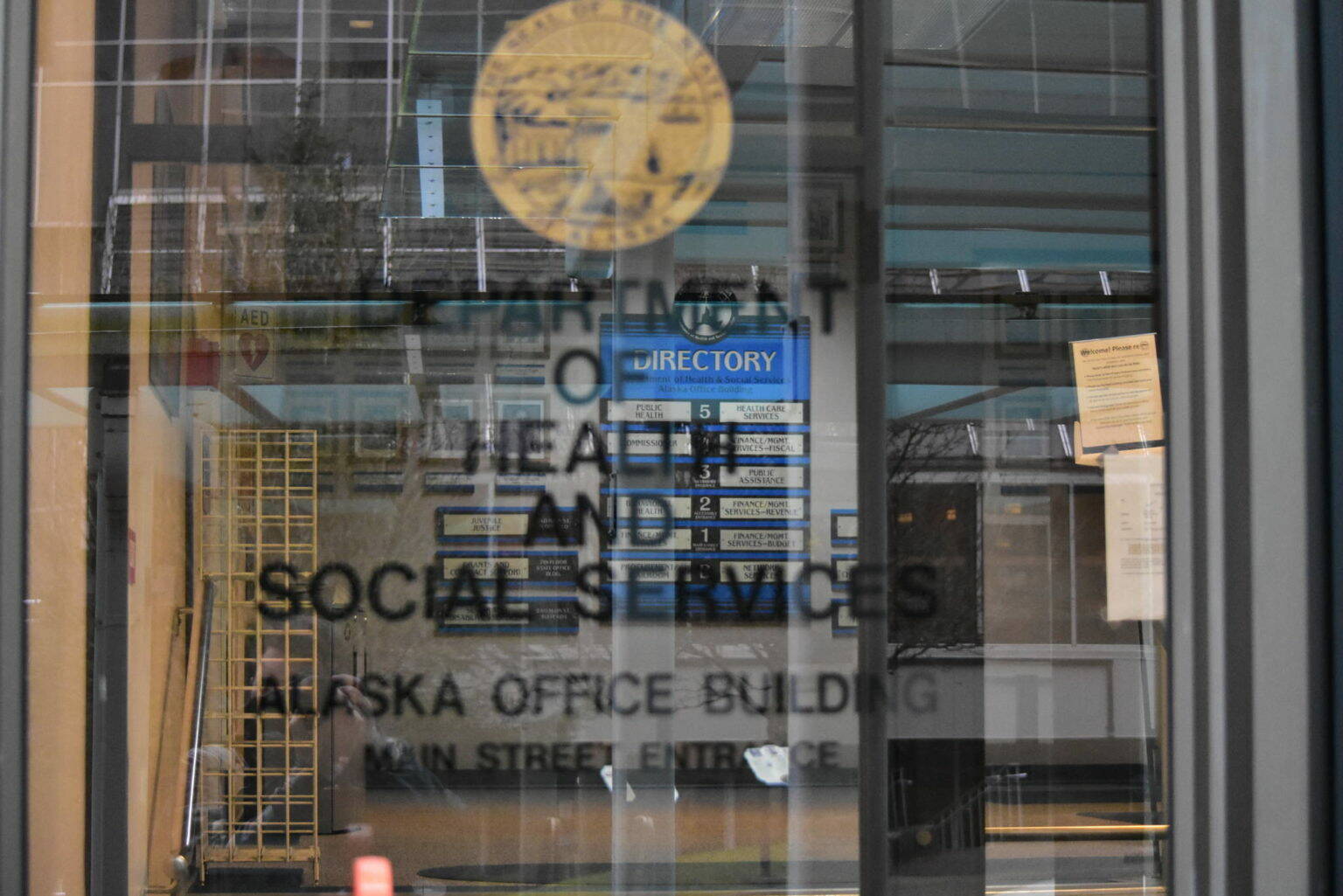A memo from the Division of Legislative Legal Services identified dozens of issues with Gov. Mike Dunleavy’s executive order to split the Department of Health and Social Services into two new departments.
“This executive order greatly exceeds the length and scope of prior executive orders … that merged or split executive branch departments,” legislative counsel Andrew Dunmire said in a Feb. 14 memo. “Additionally, it contains a number of drafting errors, introduces ambiguity into the Alaska Statutes, and it amends statutes in a manner that may be considered as substantive.”
Dunleavy initially proposed splitting DHSS in December 2020, but the announcement was met with skepticism from Alaska Native groups who said the proposal would hurt Indigenous people. In early 2021, Central Council of the Tlingit and Haida Indian Tribes of Alaska President Richard Chalyee Éesh Peterson told lawmakers during testimony he was concerned about the impacts the split would have on the provision of child welfare services. Peterson noted at the time the majority of children in state care are Alaska Native.
Dunleavy withdrew his proposal in March 2021, citing technical issues but said the proposal would be resubmitted, which it was at the beginning of this year’s legislative session.
The department is the state’s largest — its number of employees exceeding the population of several Alaskan cities — and splitting the department would make things easier to manage, resulting in better outcomes.
According to DHSS Commissioner Adam Crum, DHSS currently has 3,259 positions; has a 2022 budget of $3.4 million from 119 different fund sources and manages over 100 different programs.
The proposal would split DHSS into the Department of Health and the Department of Family and Community Services, each with its own commissioner. The administration argues there’s precedent for creating new state departments through executive order. In 2003, Executive Order 108 moved the Alaska Pioneer Homes and regulation of child care facilities into DHSS and EO 55 split the Department of Corrections from DHSS in 1984.
But Tuesday’s legal memo argued the proposals contained within EO 121 exceed past executive orders in both length and breadth and notes several inconsistencies within the text of the order.
“EO 121 is 100 pages long and makes numerous amendments to existing statutes, enacts and repeals over 100 statute sections, and amends policy that is currently codified in statute,” Dunmire wrote.
The memo suggests using legislation to split the department, which the Dunleavy administration has pushed back against. In a presentation to the House of Representatives Health and Social Services Committee on Feb. 8, Crum said the order didn’t create substantive law changes and was able to enact a definite timeline and be less disruptive to services.
In an email, DHSS spokesman Clinton Bennett said the department had only received the memo Tuesday afternoon.
“Upon initial review, major components of the memorandum are surprising and appear contradictory to previous Legislative Legal opinions,” Bennett said. “The department worked closely with stakeholders on the development of EO 121 and remains committed to improving services for Alaskans through the proposed executive order. DHSS will develop a detailed response to the memo in the coming days.”
The House HHS Committee will be reviewing the memo at the meeting at 3 p.m. on Saturday, Feb. 19.
Contact reporter Peter Segall at psegall@juneauempire.com. Follow him on Twitter at @SegallJnuEmpire.


